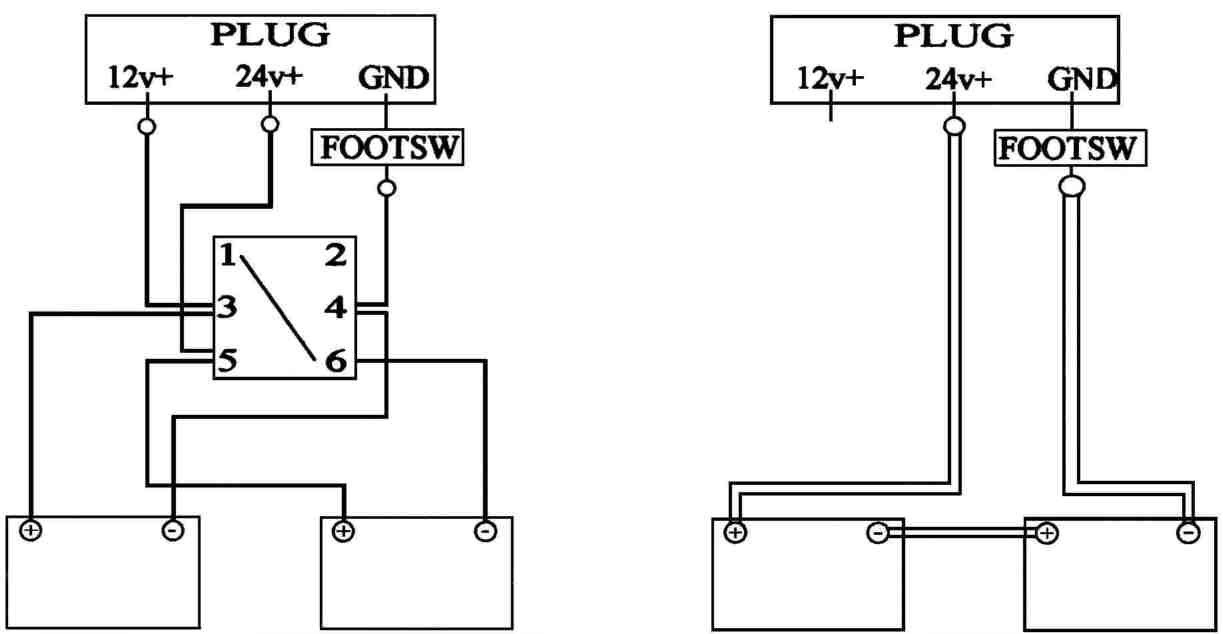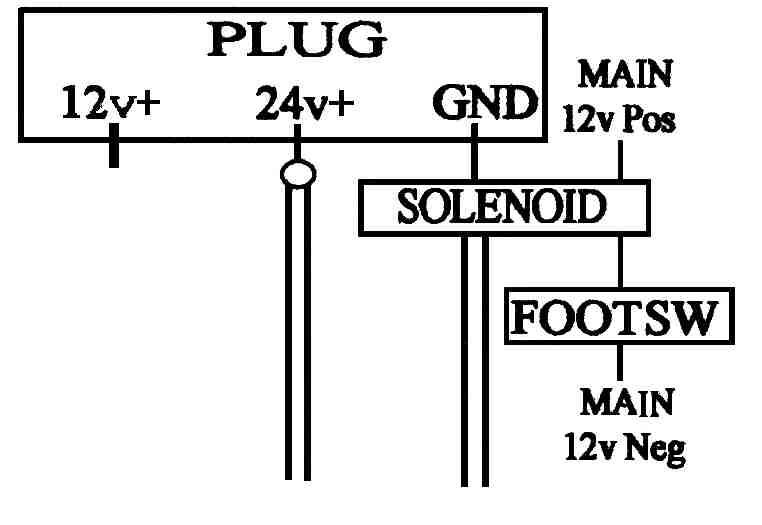DRAWING 1:

You may take this process one step further by adding a 100 amp marine solenoid to the ground path as shown in Drawing 2. This further minimizes current loss by removing the foot switch(es) from the current path.
DRAWING 2:

Both of these mods
have been tested and, if done properly, will work well. There should
be an improvement in overall troll motor performance, particularly at sustained
high power settings.
The following is a list
of things to remember about batteries and charging:
1) If using lead-acid
batteries, check the water level regularly. I prefer to use distilled
water to replenish levels. Low maintenance batteries must be checked too.
2) Check battery mounts.
Assure that hold downs are tight.
3) Check that terminal
nuts are tight and free of corrosion.
4) Unplug troll motor
before charging.
5) Never connect or
disconnect a charger from a battery with the charger powered up. Arcing
can cause damage, especially to circuits attached to main battery. There is
also an explosion risk due to fuel fumes or hydrogen build-up
if the compartment has been closed.
6) Never leave an
external charger connected and unpowered. Many chargers
do not have a blocking diode and will discharge batteries.
copyright © by Ken Cook 1996, all rights reserved
Reprinted by permission of "Bass & Walleye Boats"